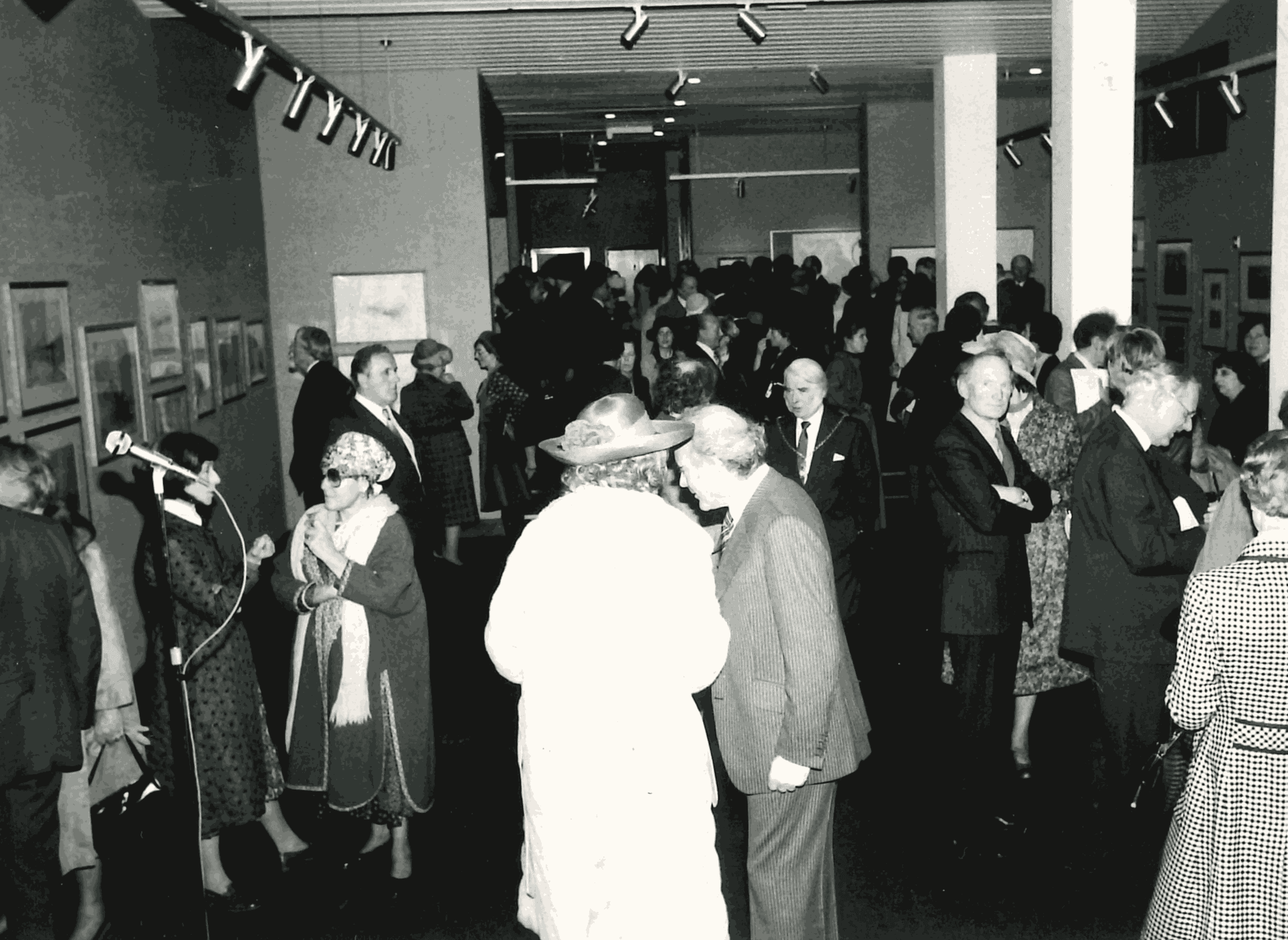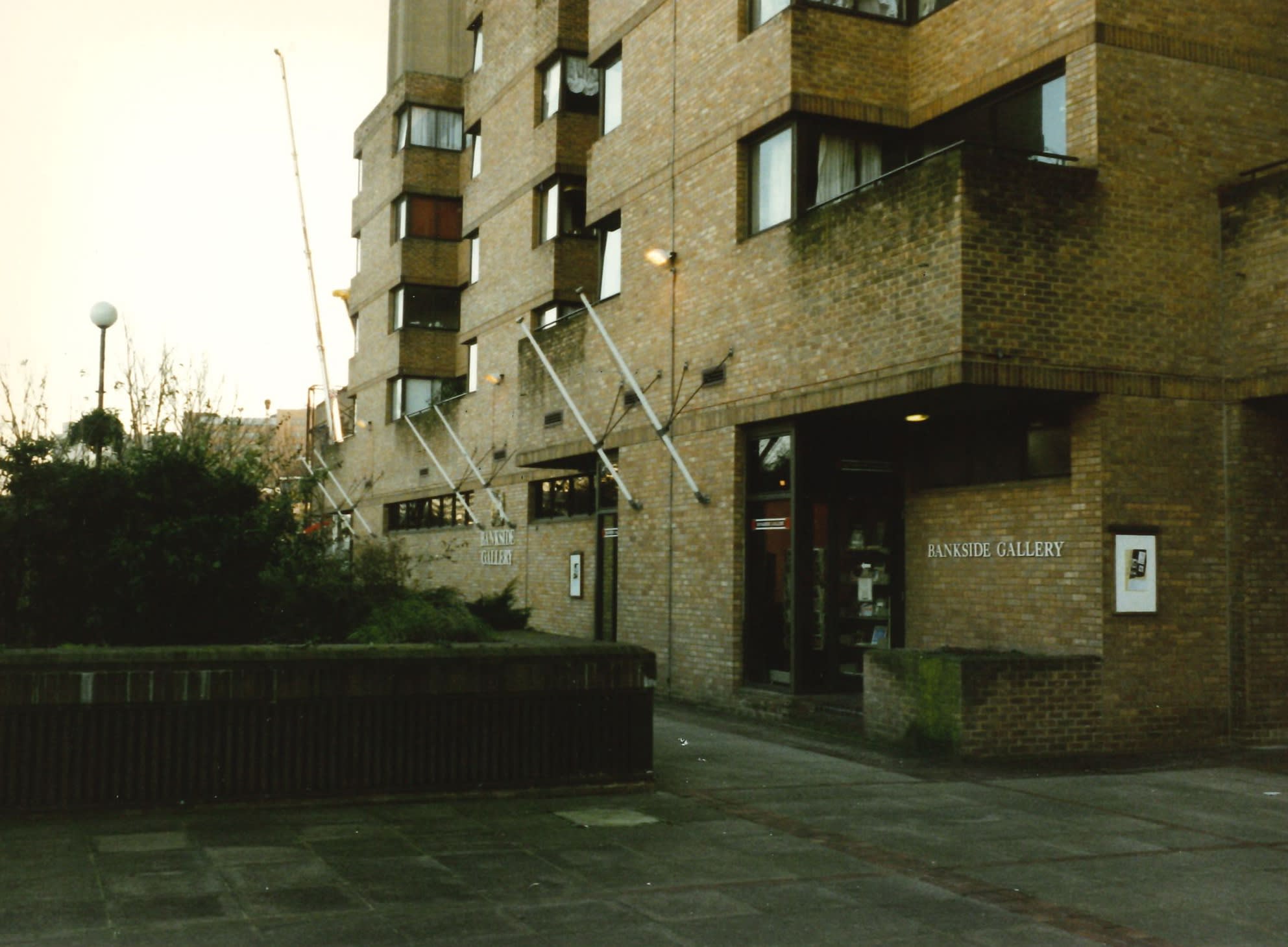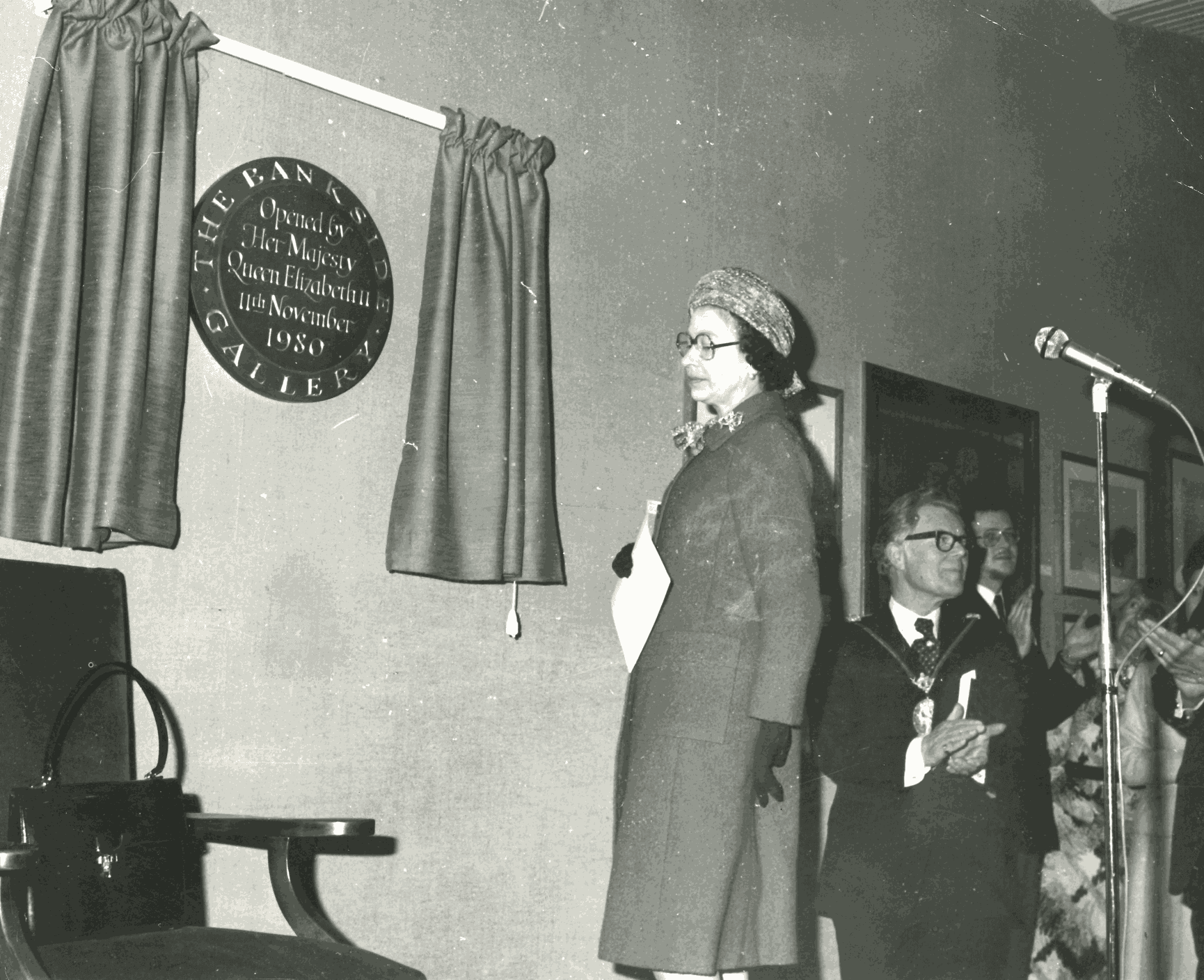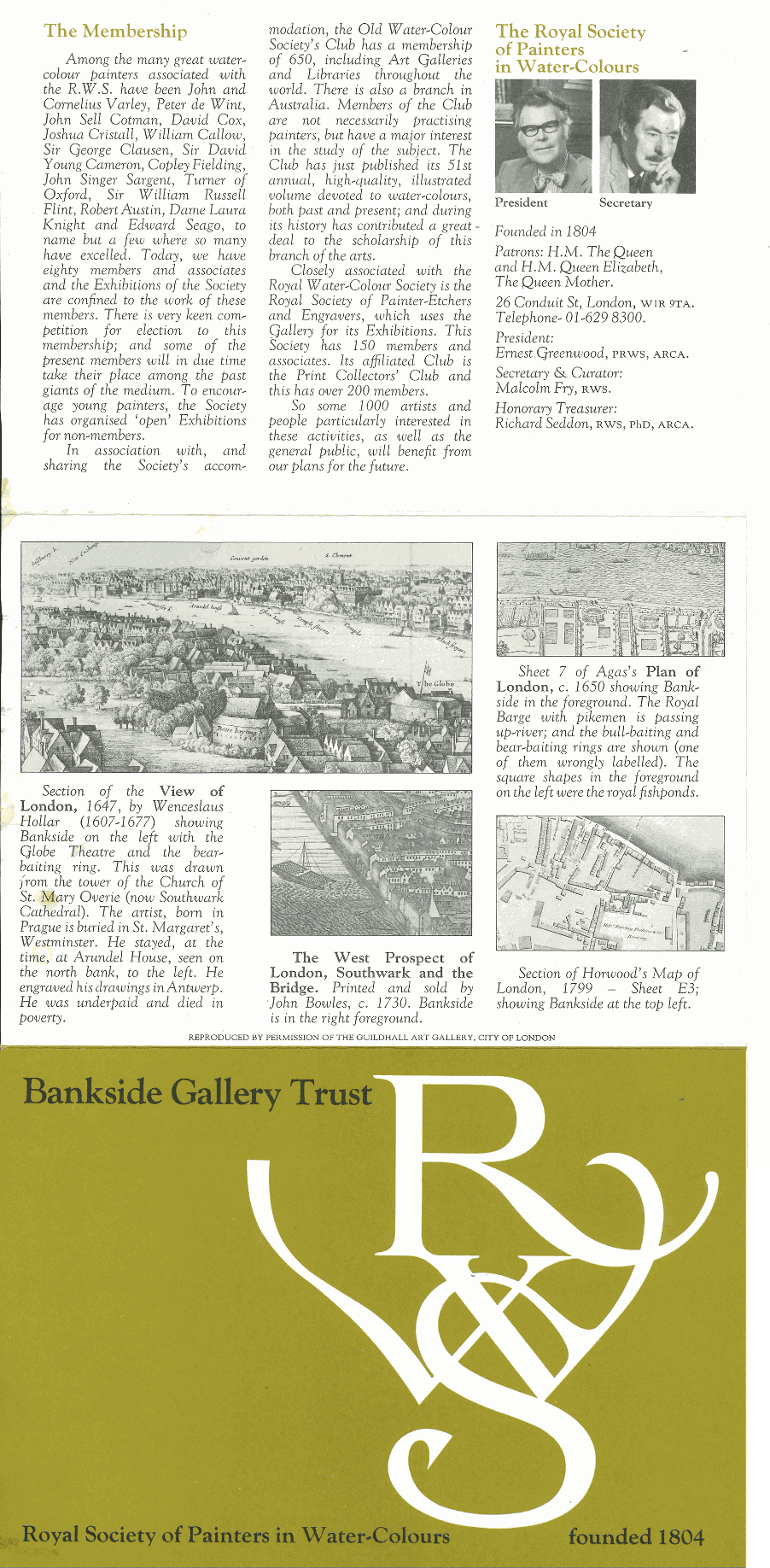Forty years ago, this was the scene at Bankside Gallery.

This was the royal opening of Bankside Gallery on 11th November 1980, and the private view of its inaugural show of JMW Turner’s drawings and watercolours of British river scenes from the British Museum.



But what led up to this moment?...
What is the history of the collaboration between the RWS and the RE?
The Royal Watercolour Society, formerly the Society of Painters in Watercolour, founded in 1804, and the Royal Society of Painter-Printmakers, formerly the Society of Painter-Etchers, founded in 1880 were both born from a feeling that the Royal Academy undervalued their respective media, and failed to show them to advantage, if at all.
Watercolour was considered ‘drawing’ rather than ‘painting’, and therefore lower status. It was for studies and sketches rather than finished pieces, the received wisdom of the day asserted, and landscape, which was its most frequent subject matter, was considered very low down the genre hierarchy which governed the hanging of works in the RA. A now legendary meeting at the Stratford Coffee House in Oxford Street on Friday 30th November 1804 established the beginnings of what was to become the RWS, whose original name was the snappy ‘Society Associated for the Purpose of Establishing an Annual Exhibition of Paintings in Water Colors’. (They soon changed it to the ‘Society of Painters in Water Colours’.)[1]
Printmaking was considered a copyist’s craft. Painters produced masterpieces, and printmakers copied them for dissemination. According to the RA at the time, “Engraving is wholly devoid” of “those intellectual qualities of Invention and Composition, which Painting, Sculpture and Architecture so eminently possess.”[2] This was furiously contested from the foundation of the RA in 1768. In 1853 Sir Charles Eastlake persuaded them to create a new class of Academician Engravers and Associate Engravers for printmakers reproducing the work of painters, but there was still no recognition of original etchers. Following the model of the watercolour painters, Seymour Haden gathered artists who worked in printmaking and founded the ‘Society of Painter-Etchers’ on 31 July 1880 from his living room at 38 Hertford Street Mayfair.
Fittingly the two, now royal, societies (who, you will have noticed, both firmly asserted themselves as ‘painters’ in their society names) joined forces in exhibition rooms at 5a Pall Mall in 1889 and never looked back. In 1938 they moved to 26 Conduit Street, London W1, when the lease at 5a Pall Mall East expired and the block was redeveloped.

Why did the premises change? And why Bankside?
As the 20th century went on, property prices in the West End rose. In 1973 the Conduit Street lease was renewed for seven years but the rent was increased to £700, an unsustainable price for the two societies. A committee of Harry Eccleston, Andrew Freeth, Malcolm Fry (RWS and RE Secretary), Richard Seddon, and Rodney Millard was set up to consider the question of new premises. But as chance would have it, a fortuitous dinner invitation led to the foundation of Bankside Gallery, and potentially the rescue of both societies.
Ernest Greenwood, then President of the RWS, held a retrospective exhibition in the galleries of the New Metropole Hotel in Folkestone which had recently been acquired by property developer Sir Gerald Glover. Simon Fenwick describes what happened next in The Enchanted River: Two Hundred Years of the Royal Watercolour Society:
“Glover invited Greenwood to a dinner party and when Greenwood expressed his thanks for what had been a pleasant evening Glover replied that if the RWS was ever in a fix to let him know. By now the Society’s search for new premises was getting desperate so Greenwood took up the offer, and one evening – it was, Greenwood recalled, pouring with rain and he arrived drenched on the doorstep – he visited Glover at his him in Park Lane. Glover phoned his architect. It so happened that in drawing up plans for a new development on the South Bank for Southward Council the architects, in order to gain planning permission, were anxious to incorporate an educational element in their designs and so they were more than happy for the opportunity to include a Royal Society in their building. These were the first steps towards the establishment of a gallery on the site even though the space itself had originally been designated as a supermarket… On 26 February 1975 the Select Committee of the Society unanimously passed a resolution recommending that the RWS accept without delay Southwark Council’s offer of a sixty-year lease in the new building of a new home together with offices and stores for a nominal sum of £60,000. The Royal Society of Painter-Etchers and Engravers also decided that they now wished to be equal partners in any new venture with the RWS rather than tenants and eventually the lease for the new Bankside Gallery was signed.”
So from desperate and drenched on the doorstep of a developer, the societies were able to look to a brighter future. A fundraising campaign followed along with the inevitable delays and complications involved in a major building project, but finally, in 1980, the societies were settled in their new home. And no one would have guessed from the smiles on everyone’s faces at the opening, what a struggle it had been to get to that place!

[1] NB. The different spellings of ‘water color’ ‘water colours’ etc. reflect the variety used at the time.
[2] No Day Without a Line, p.9
Bibliography
Simon Fenwick, The Enchanted River: Two Hundred Years of the Royal Watercolour Society, (Sansom & Company: Bristol, 2004)
Martin Hopkinson, No Day Without a Line: The History of The Royal Society of Painter-Printmakers 1880-1999, (Ashmolean: Oxford, 1999)
Edward Twohig, Print REbels: Haden, Palmer Whistler and the origins of the RE (Royal Society of Painter-Printmakers), (RE: London, 2018)
Turner at Bankside Gallery: Catalogue of an Exhibition of Drawings & Water-colours of British River Scenes from the British Museum, 11th November – 16th December 1980, (Bankside Gallery: London, 1980).
More like this on the Blog...
Read: 40 years of Bankside Gallery: Drawing Bankside
Read: 40 years of Bankside Gallery: One Brief, Many Responses
Read: Bankside Gallery on... The Crown??
